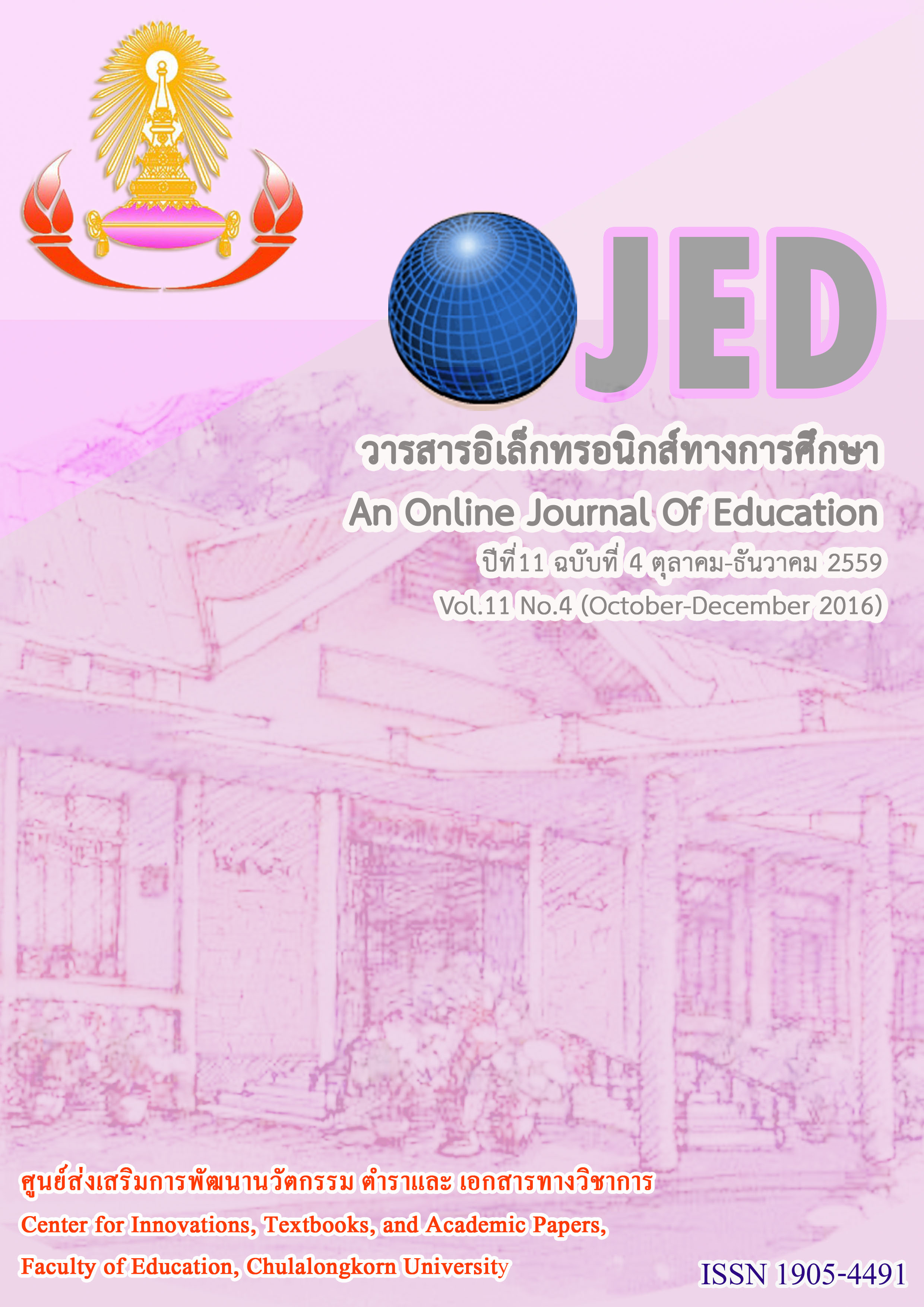การพัฒนารายวิชาการจัดองค์ประกอบศิลป์โดยใช้มิติทางวัฒนธรรม สําหรับหลักสูตรศิลปศึกษาระดับปริญญาตรี Development of an Art Composition Subject by Using Cultural Dimensions for an Undergraduate Art Education Curriculum
Keywords:
ART COMPOSITION, DEVELOPMENT, ART EDUCATION CURRICULUM, CULTUALAbstract
Abstract
The purposes of this research were 1) to study course details and teaching activity guidelines and 2) to develop art composition curriculum by applying cultural dimension for the undergraduate art education course. This research was a combined qualitative and quantitative research. The purposive sample consisted of 44 persons including instructors of art composition in undergraduate level, cultural experts or artists whose unique cultural works were well acclaimed, art education undergraduate students from four regions of Thailand and artwork of regional artists, 36 works .The research tools comprised interviews, questionnaires and analysis for art work. The data analysis was presented in tables together with essays.
The findings on opinions analysis indicated that the cultural dimension should be added in the art composition course since the learners will have opportunity to learn the great values of Thai culture, understand the differences among cultures and can apply them for their own culture. Moreover, the art composition course should contained both theories and practices as follows: 1) objectives: contents on history and significance of culture of each region, study of regional culture, and application of studied culture for creating unique art works of each region; 2) course details: northern region: study on temples and Lanna style architecture; central region: study on basketwork or agriculture equipment; northeastern region: study on mural arts of temples; and southern region: Korlae boats and Islam patterns; 3) instruction management: the learners should have opportunity to learn with experts to exchange knowledge and demonstrate their works. Also, filed trips should be organized so the learners can learn from experiences; 4) instruction media: digital online media should be balanced with real works; 5) test and evaluation: test and evaluation of the integrity of art composition and ability of presenting cultural dimension




